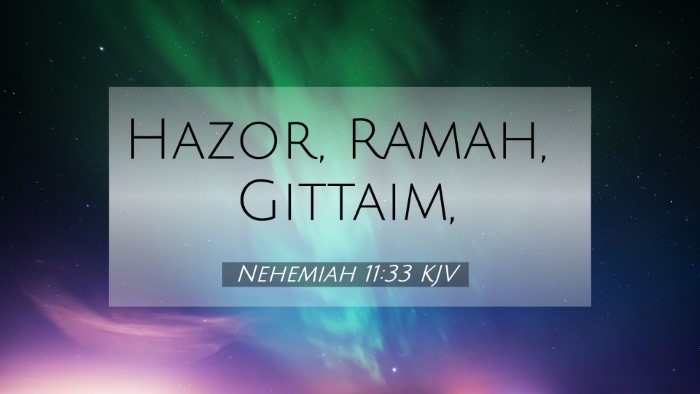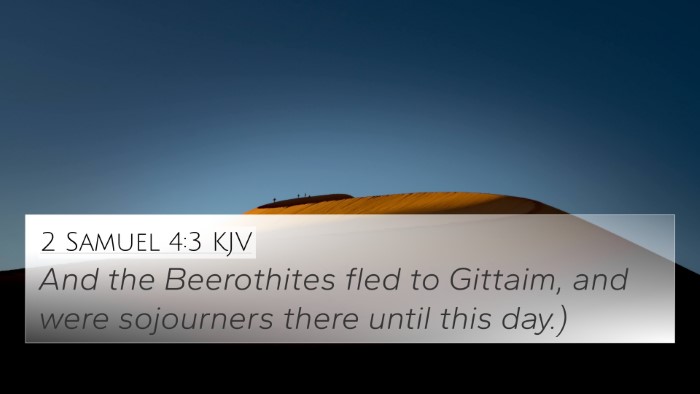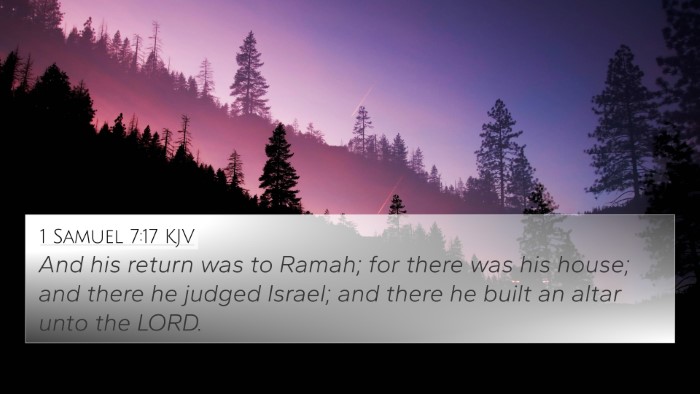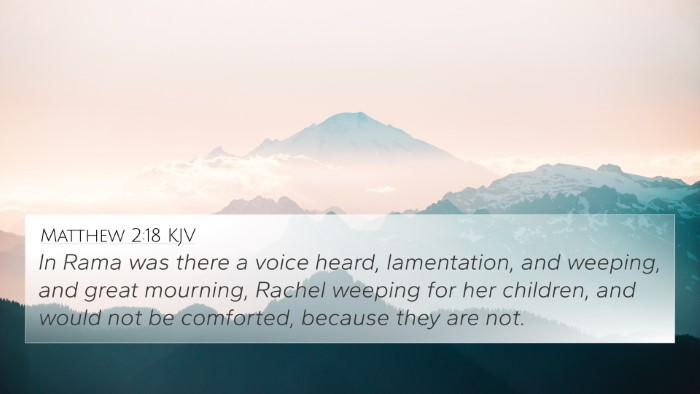Understanding Nehemiah 11:33
Bible Verse: Nehemiah 11:33 - "The children of the other menorahs, who were all the sons of Benjamin, and they were settled in Hered, in the land, and sitting in Nehemi, there took the rest of the year to complete these cities."
Verse Summary
Nehemiah 11:33 highlights the establishment of residents in certain territories of Jerusalem, focusing on the children of the other menorahs and the tribe of Benjamin. This verse reflects the community's effort to repopulate Jerusalem after the Babylonian exile, underscoring themes of restoration and community.
Commentary Insights
Matthew Henry's Commentary
Matthew Henry emphasizes the importance of the repopulation of Jerusalem as a physical and spiritual renewal. He remarks that the names mentioned are indicative of the families that returned, serving a dual purpose of genealogical record and the validation of God's promise to bring His people back to their land.
Albert Barnes' Commentary
Albert Barnes points out that the naming of specific families serves as a reminder of God’s faithfulness. He notes that the restoration of Jerusalem required not just spiritual rebuilding, but also the practical aspect of habitation, showcasing the effort to stabilize the community and worship.
Adam Clarke's Commentary
Adam Clarke provides insight into the theological significance of the verse. He discusses the tribal allocations within Jerusalem, highlighting that Benjamin holds a unique position as a central figure in Israel's history. Clarke also points out that this repopulation was crucial for maintaining the identity and worship practices of the Israelites.
Bible Cross-References
- Ezra 2:21-35 - Details about the returning exiles from the tribe of Benjamin.
- Jeremiah 32:44 - Refers to the territory of Benjamin in the context of restoration.
- Isaiah 11:13 - The division between the tribes which includes Benjamin post-exile.
- 1 Chronicles 9:3 - The importance of genealogical records in the context of returning peoples.
- Nehemiah 7:6-7 - Lists the families and numbers of those who returned to Jerusalem.
- Zechariah 10:6 - God’s promise to restore His people, linking back to the themes of Nehemiah.
- Luke 2:4 - The significance of tribal connections in the context of the New Testament.
Connections Between Bible Verses
The connections between these verses portray a narrative of God's faithfulness to His covenant people through historical accounts, emphasizing not only the restoration of physical land but also the rebuilding of spiritual identity in the community. Each referenced verse enriches the understanding of Nehemiah 11:33, revealing a tapestry of interwoven themes of hope, identity, and divine providence.
Theological Themes
- Restoration: The narrative in Nehemiah 11:33 is part of the overall theme of restoration after exile, inherent in both the Old and New Testaments.
- Community Identity: This verse illustrates the importance of knowing one’s heritage and the role it plays in community formation.
- Covenantal Faithfulness: The return of families signifies God’s faithfulness to His covenant, echoing themes found throughout the prophetic books.
How to Use Bible Cross-References
Utilizing a Bible cross-reference guide, biblical scholars and enthusiasts can deepen their understanding of specific passages by identifying thematic connections. This method underscores the interplay of verses, illuminating spiritual meanings and enhancing one's study of the scripture.
Conclusion
In conclusion, Nehemiah 11:33 serves as a pivotal point in understanding the Israelite's return to Jerusalem and the rebuilding of their identity and community. The insights drawn from public domain commentaries reflect both the historical significance of the people involved and the theological implications of their actions as a fulfillment of God's promises.






